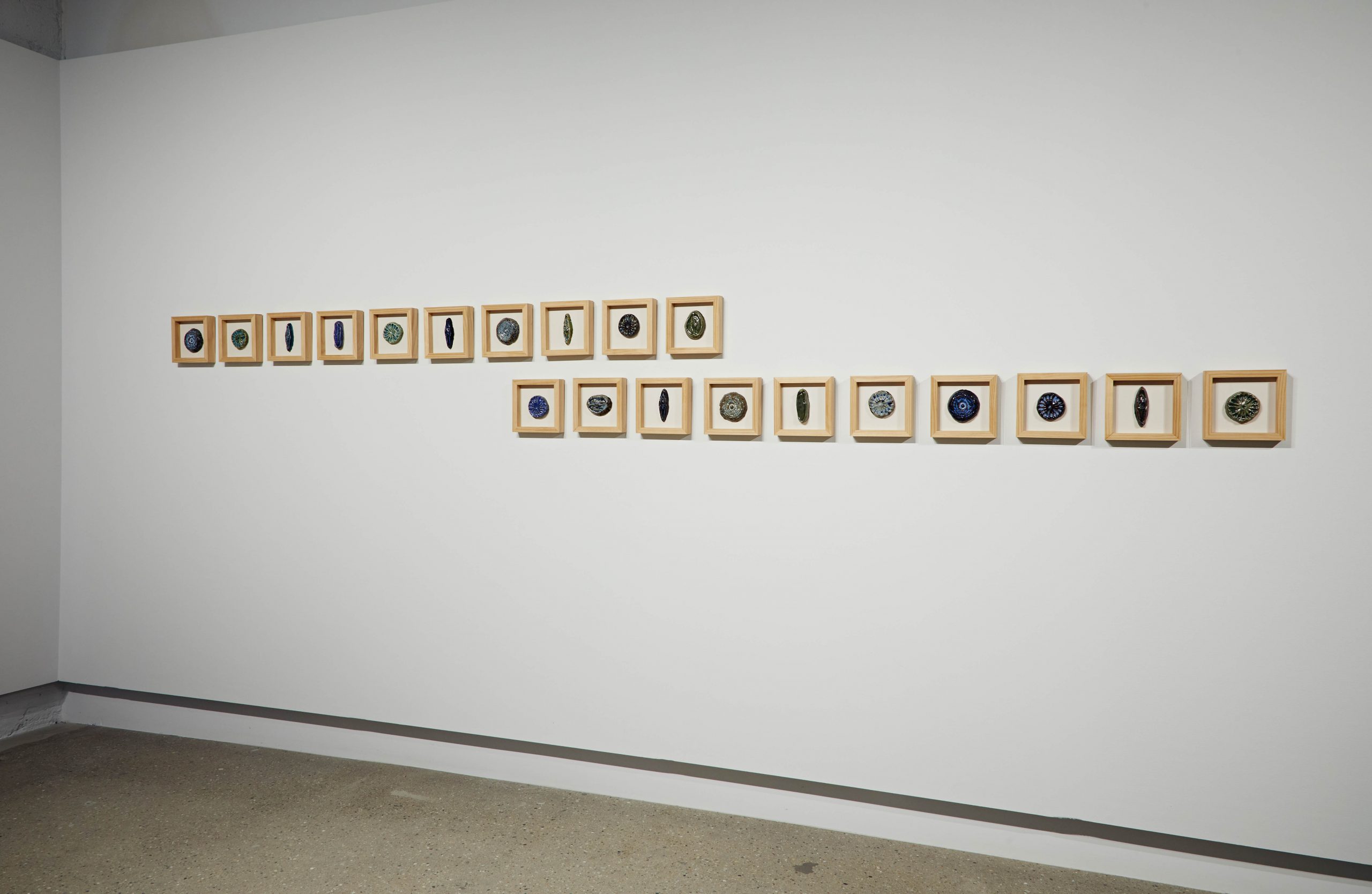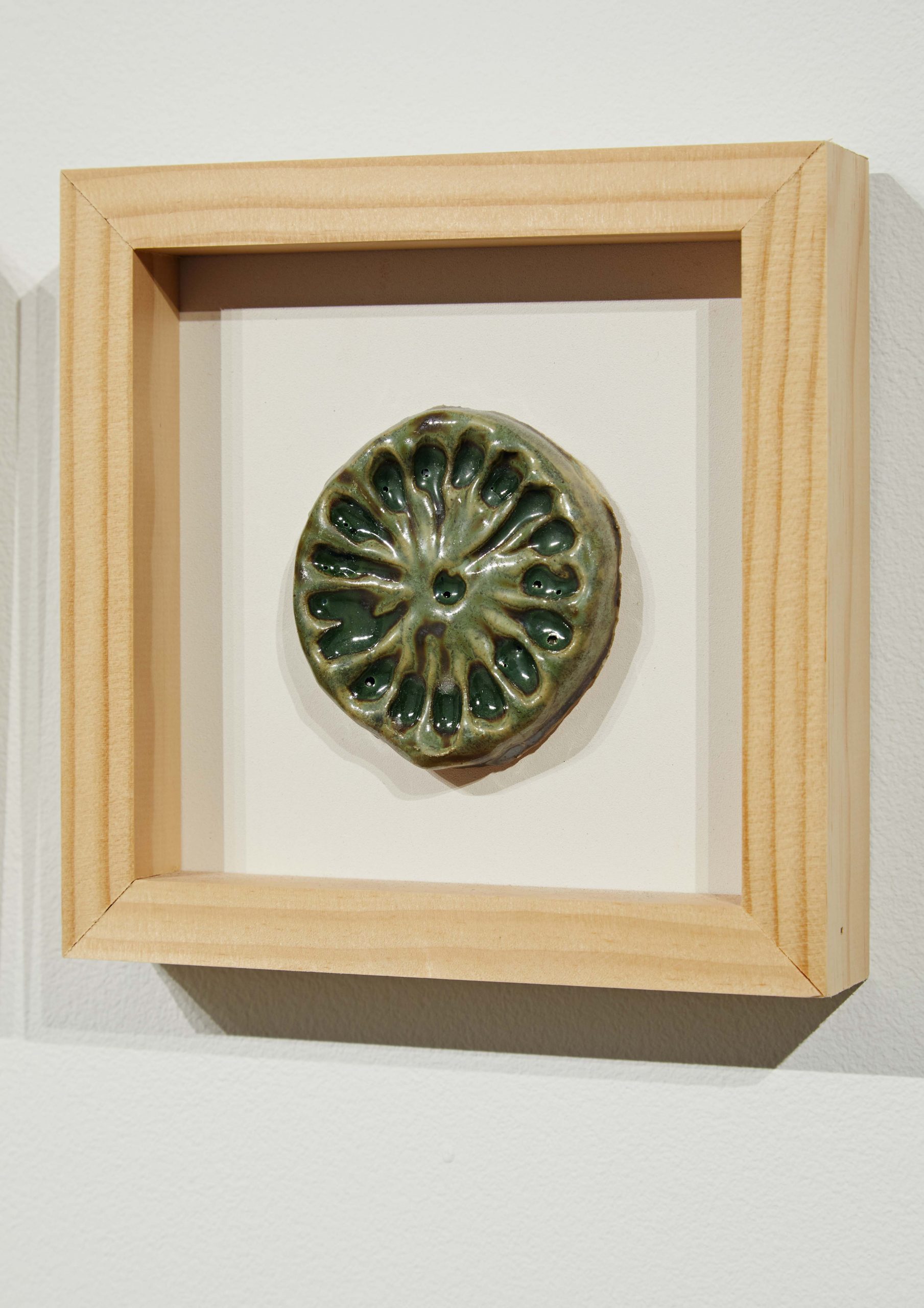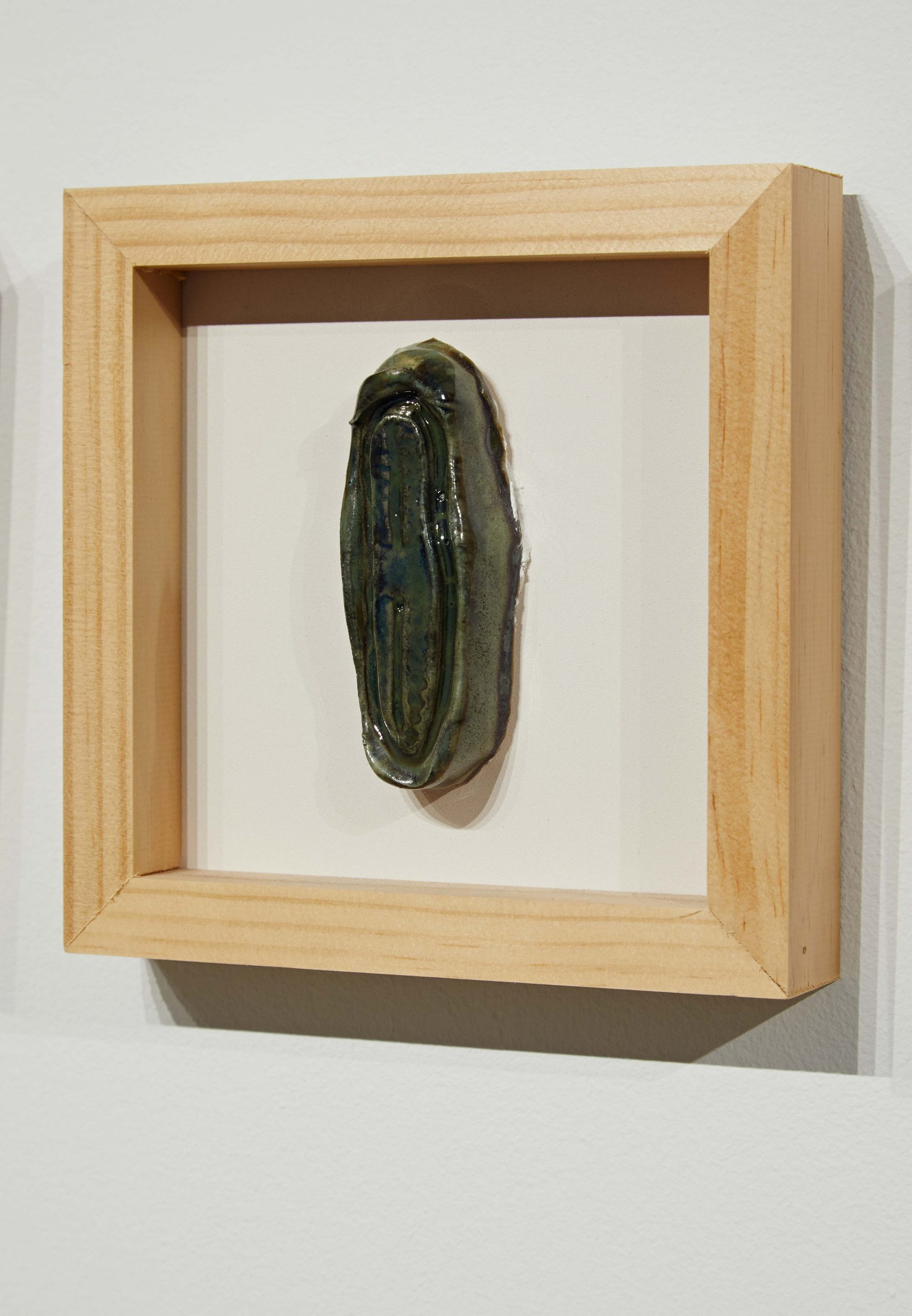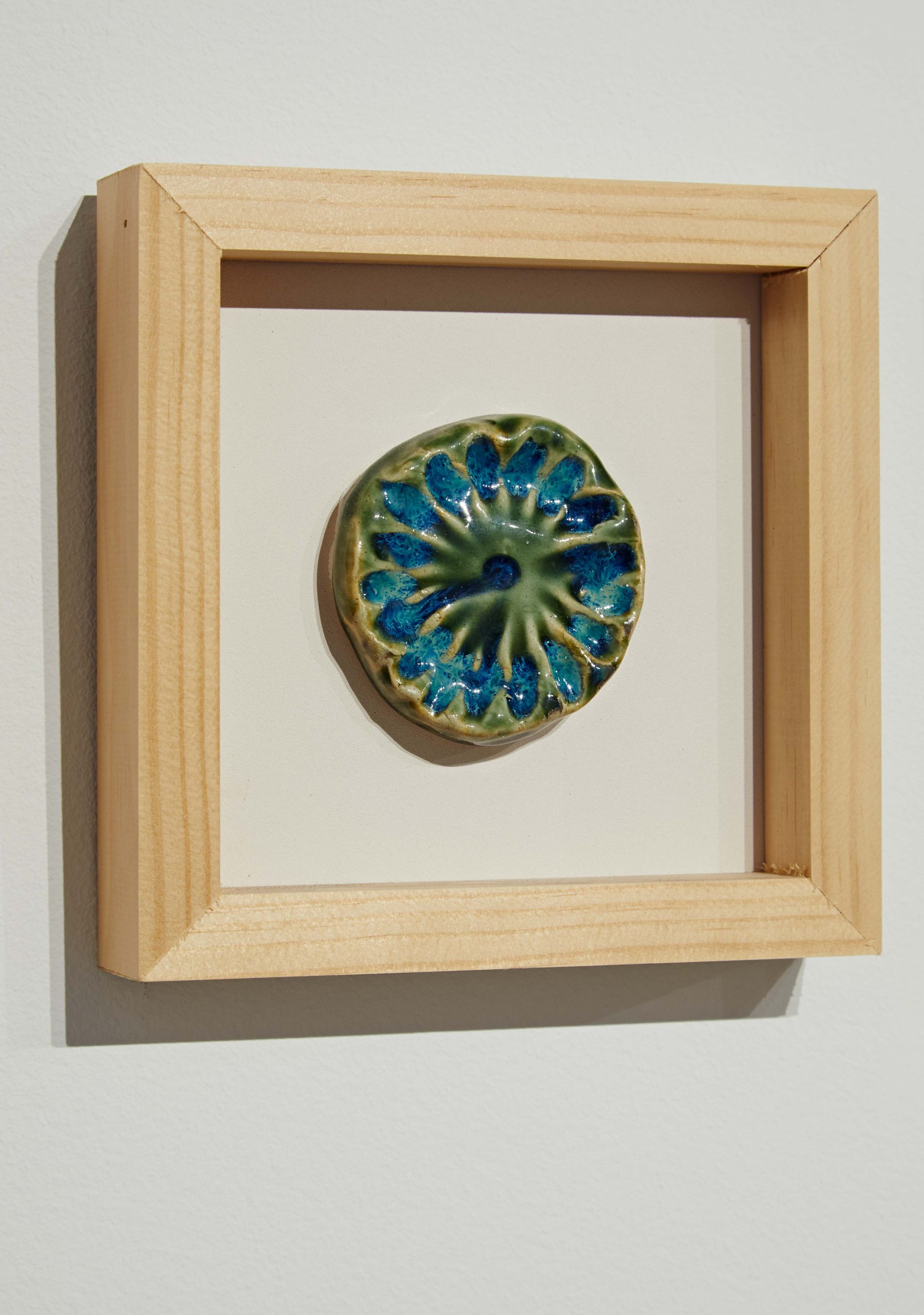Diatoms, 2017
Hand-painted, hand-glazed ceramic on ceramic flat tile
The complex ecosystems of Earth rely on invisible organisms to thrive. One could go so far as to say that our planet would be a very different place without the essential contribution of diatoms. Regularly overlooked in conversations about biodiversity, diatoms are the largest type of phytoplankton algae. They feed marine animals, absorb carbon dioxide dissolved in the ocean from the atmosphere, and collectively produce as much oxygen as all of the world’s trees. Their nutrient-rich bodies are swept up into the atmosphere by storm winds and deposited on land where they become an essential fertilizer to the tropical forests. Diatoms are extremely small, <0.2 mm in size, and only visible to humans through a microscope. Cortada’s installation invites us to reframe our understanding of ecosystemic agency beyond the limitations of human vision. His ceramic portraits of diatoms foreground the individuality of each microorganism while alluding to its fragility.
Courtesy of the artist.



